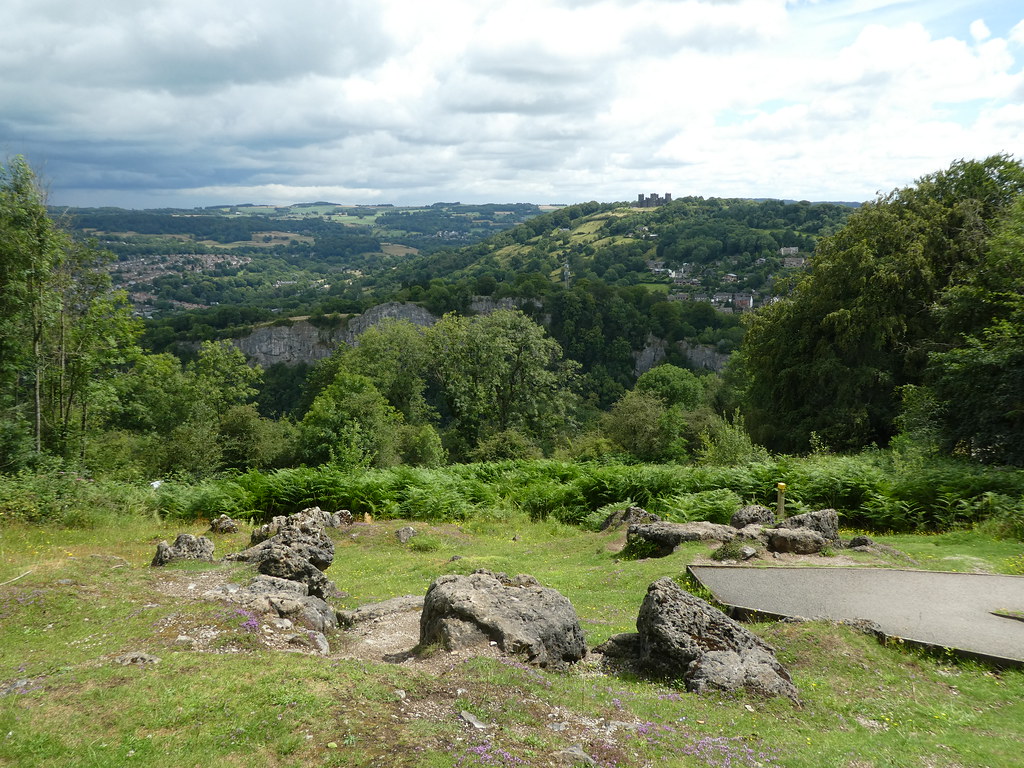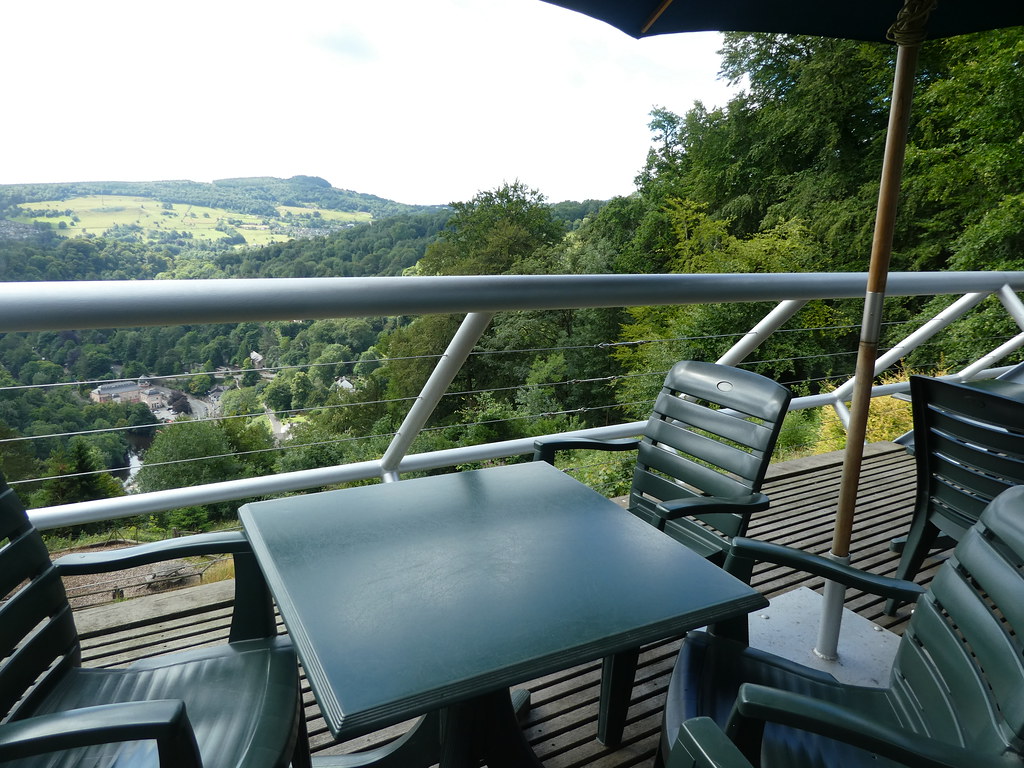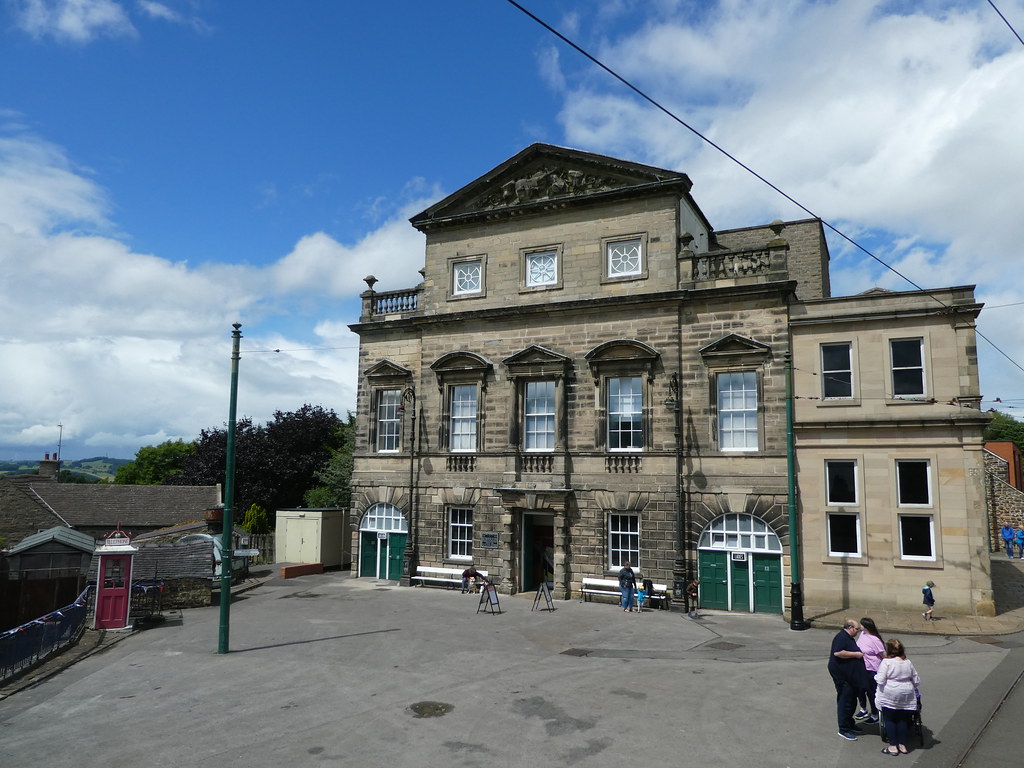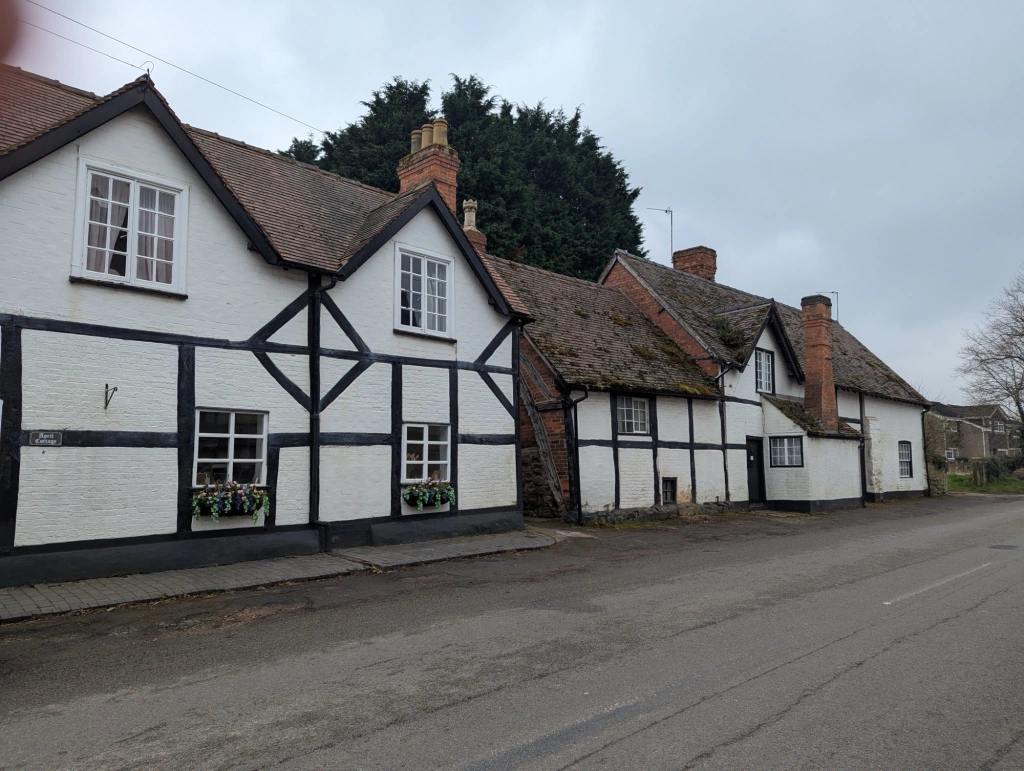There are no end of lovely things to see and do in Derbyshire and we’d saved two of the Peak District’s top attractions for our final day. Our morning started with a 25 minute journey to Matlock Bath to visit the Heights of Abraham hilltop estate.
Parking is available at the nearby railway station and from there it was only a five minute walk to the ticket kiosk. Standard tickets cost £27.50 or £24.50 if bought in advance on-line. You might think that sounds expensive but as there are so many activities included in the ticket price, it’s actually good value for a half day visit.
Access to the hilltop is via a seven minute cable car ride and as we’d arrived soon after the 10.00 a.m. opening there was no queue meaning that we could have an entire car to ourselves. The cable car system was constructed in 1984 and at that time was the first place in the United Kingdom to have one.
I always enjoy a ride in a cable car and it felt so peaceful gliding over the treetops viewing the town of Matlock Bath and the scenic Derwent valley below. There are 12 cable cars on the system running together in groups of three with each car holding a maximum of 6 passengers. From the base station to the hilltop it’s a vertical distance of 554ft (169m).
On reaching the top station at Masson Hill we were greeted by one of the estate’s character actors who welcomed us to the Heights of Abraham, providing us with a short overview of the estate.

We then followed one of the scenic trails which led us to viewpoints across the estate. At various intervals along the route we came across useful information boards telling us about the geology, local history and the industrial heritage of this part of Derbyshire.
Five willow sculptures have recently been installed across the hilltop depicting key moments in the Heights of Abraham’s history. These range from a High Peak farmer and his herd of sheep to a 17th century miner and his son taking a well earned rest after a day down the mines.
Guided tours of two separate caverns are included in the admission charge and can be taken at regular intervals. The Masson Cave tour took us down some steps leading onto narrow passageways which opened up into a spectacular cavern. Our tour guide pointed out calcite with his torch and showed us some spectacular stalagmite and stalactite formations.
Most people needed to bend down whilst walking through the tunnels but being a petite 5’1″, for once this was a bonus and I could stay upright without banging my head.
The guided tour through the Great Rutland Cavern has fewer steps and is more accessible. It’s also very interesting as it is led by a guide dressed in period costume who recreated a day in the life of a 17th century lead miner to our group.

Back above ground we followed one of the other woodland trails which took us to the Victoria Prospect Lookout Tower. Its winding staircase is narrow and quite steep so if you don’t fancy climbing up, don’t worry as the valley views from the foot of the tower are equally good.
Before taking the cable car back down we looked inside the Masson Pavilion where a period costume exhibition was taking place illustrating how people would have dressed between 1787 and 1910 when visiting the estate. These clothes bore no resemblance to the casual attire of visitors nowadays but were very interesting to look at. Also on the hilltop is the Vista Cafe which definitely lives up to its name as it has panoramic views from its floor to ceiling windows and outdoor terrace.

By the time we had taken the cable car back down we had been at the attraction for four hours so I would suggest allowing about that length of time for a visit as at busy times there may be queues for the cable cars. Heights of Abraham.
Back in the car it was only a short hop of 6 miles to another of the county’s ‘must see’ attractions, that of Crich Tramway Village, home to the National Tramway Museum. I adore visiting transport museums having spent my childhood living in a town with a heritage of trams. Whilst every other public tramway in the United Kingdom closed by 1962, trams in my hometown continued operating and were the sole survivor until Manchester launched its modern Metrolink service in 1992.
Standard admission to the Tramway Village is £22 with tickets offering unlimited free returns within one year. Included in the ticket price are vintage tram rides, access to the exhibition hall, workshop, tram depot and village amenities.
After obtaining our tickets we were each given one old penny coin to hand to the conductor on our first tram ride. On entering the gate to the tramway village we found ourselves to be in Victoria Park with its very own bandstand. As a heritage double decker tram approached it made us feel as if we had been transported back to a bygone age.
The tram collection contains more than 80 vehicles, from the earliest form of horse drawn tram through to the most advanced first generation all electric tram as well as support and maintenance vehicles.
We resisted the temptation of boarding a tram straightaway and instead strolled into the recreated village which has been painstakingly transported here and rebuilt brick by brick. There are shops, assembly rooms, a cafe, print works and The Red Lion pub.

The pub was originally located in Stoke-on-Trent and the Assembly Rooms facade dates from 1775 having been relocated to Crich following a fire at its original site in Derby in 1963. We soon discovered that we hadn’t just come to a tramway museum but also to a wonderful open-air living museum.
We popped in the sweet shop where sweets and toffees from yesteryear were on display in tall glass jars. These were weighed out in 4oz measures on a pair of balance scales before being handed to customers in paper bags.
Although you can get on and off the trams at any stop we boarded our first heritage tram at the Town End terminus. This was a vintage London United Tramways 1902 design with a spiral staircase at the rear leading up to the top deck. We clambered up the steps and after finding a pair of unoccupied seats, a very smartly dressed conductor came over and we exchanged our old pennies for tickets,
We travelled the full length of the track which is approximately one mile in length taking around 10 minutes enjoying the views of the Peak District National Park from the top deck. Part of the line is single track so trams with the right of way carry a token that is then handed to the driver in the waiting loop wishing to proceed in the opposite direction.
When we reached the end of the line we all got up and turned the backs of our seats round so that we were facing the right way for our return journey. Before getting off at the terminus we had a look at the beautiful interior of the lower deck with its plush blue velvet bench seating, polished wood and intricately patterned ceiling.
On any one day there are three working trams in operation rotated from the large collection in the depot but these are not decided upon until that morning as obviously open top trams would be unsuitable in wet weather. We also enjoyed rides on the two other trams, one of them being an open top Blackpool tram dating from 1934.
In between our tram rides we walked up and down the aisles inspecting the rest of the fleet in the depot that are brought into service. We also spent time in the large exhibition hall which is well laid out and contains a timeline history of trams from horse drawn to those in use in the 1960’s.
For young or old, the Tramway Museum makes for a splendid day out and with unlimited tram rides in a recreated village setting I adored every minute of the time I spent there.
That brought to an end our fabulous three days spent exploring Chesterfield and the Peak District National Park, a part of the country that has so much to offer both for its scenic beauty and its varied attractions.
During our stay we were guests of Visit Chesterfield, Visit the Peak District and Derbyshire and the CASA Hotel and as always, all views and opinions are entirely my own.




